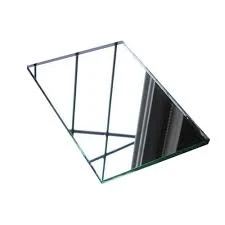

Clear to Frosted Glass A Transformative Design Element
In the world of interior design, the choice of materials can significantly influence the atmosphere and functionality of a space. One such material that has gained popularity in recent years is glass, particularly in its clear to frosted variants. This versatile medium not only adds elegance and style but also serves practical purposes that enhance both privacy and light diffusion.
Clear to Frosted Glass A Transformative Design Element
On the other hand, frosted glass provides an appealing solution to privacy concerns without sacrificing natural light. This type of glass is treated to diffuse light, softening its intensity and creating a serene ambiance. It's an ideal choice for spaces such as bathrooms, offices, or any area where occupants desire a degree of seclusion. Frosted glass allows for light to enter while obscuring visibility, fostering a tranquil environment where people can feel comfortable.

The transition from clear glass to frosted glass can be strategically utilized in various design elements. For instance, a clear glass partition can divide two spaces while still allowing light to flow freely between them. As one approaches a more private area, the clear glass can transition to frosted glass, signaling a shift in purpose. This thoughtful design approach can enhance spatial dynamics while maintaining visual continuity.
In terms of aesthetics, both clear and frosted glass offer numerous opportunities for creativity. Clear glass can be used in elegant light fixtures, kitchen cabinets, and dining tables, contributing to a minimalist and modern aesthetic. Conversely, frosted glass can serve as the focal point of a room, especially when used in decorative screens or artistic installations. The interplay of light and texture creates a dynamic visual experience, allowing designers to play with form and function.
Moreover, the use of glass in various finishes contributes to sustainability efforts in design. Glass is a recyclable material, and its longevity reduces the need for frequent replacements, making it an eco-friendly choice. With many manufacturers now focusing on sustainable practices, integrating glass into design can reflect a commitment to both beauty and environmental responsibility.
In conclusion, the transition from clear to frosted glass is more than just a stylistic choice; it embodies the balance between openness and privacy, light and shadow. This versatility makes glass an essential element in contemporary design, allowing for innovative solutions that cater to both aesthetic desires and functional requirements. Whether used in homes, offices, or public spaces, clear and frosted glass will undoubtedly continue to inspire and transform environments for years to come.